An idealised suburban Argentinian house caters to post-pandemic living
Social Arquitectos has created a refined Argentinian house for a family that blends privacy with spaces for socialising
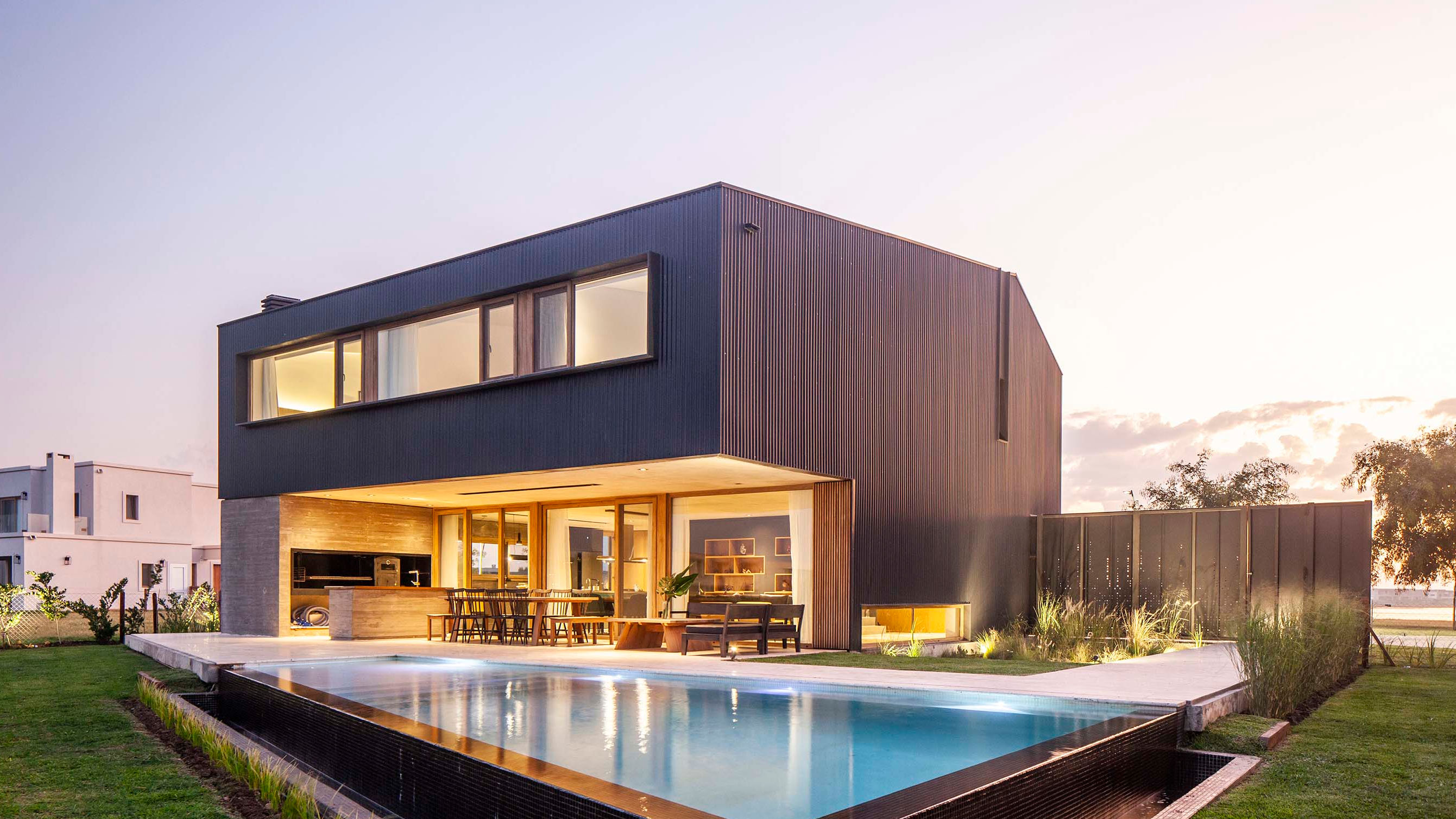
Social Arquitectos has unveiled QHouse 1, an Argentinian house serving as a new prototype suburban residence designed to accommodate shifting demographics in the post-pandemic world. Described as a ‘response to the urban exodus’ that happened following the pandemic, the shift in working patterns and the country’s increasing political instability, the QHouse 1 is a refined take on the traditional family house, a place of refuge and familiarity in trying times.
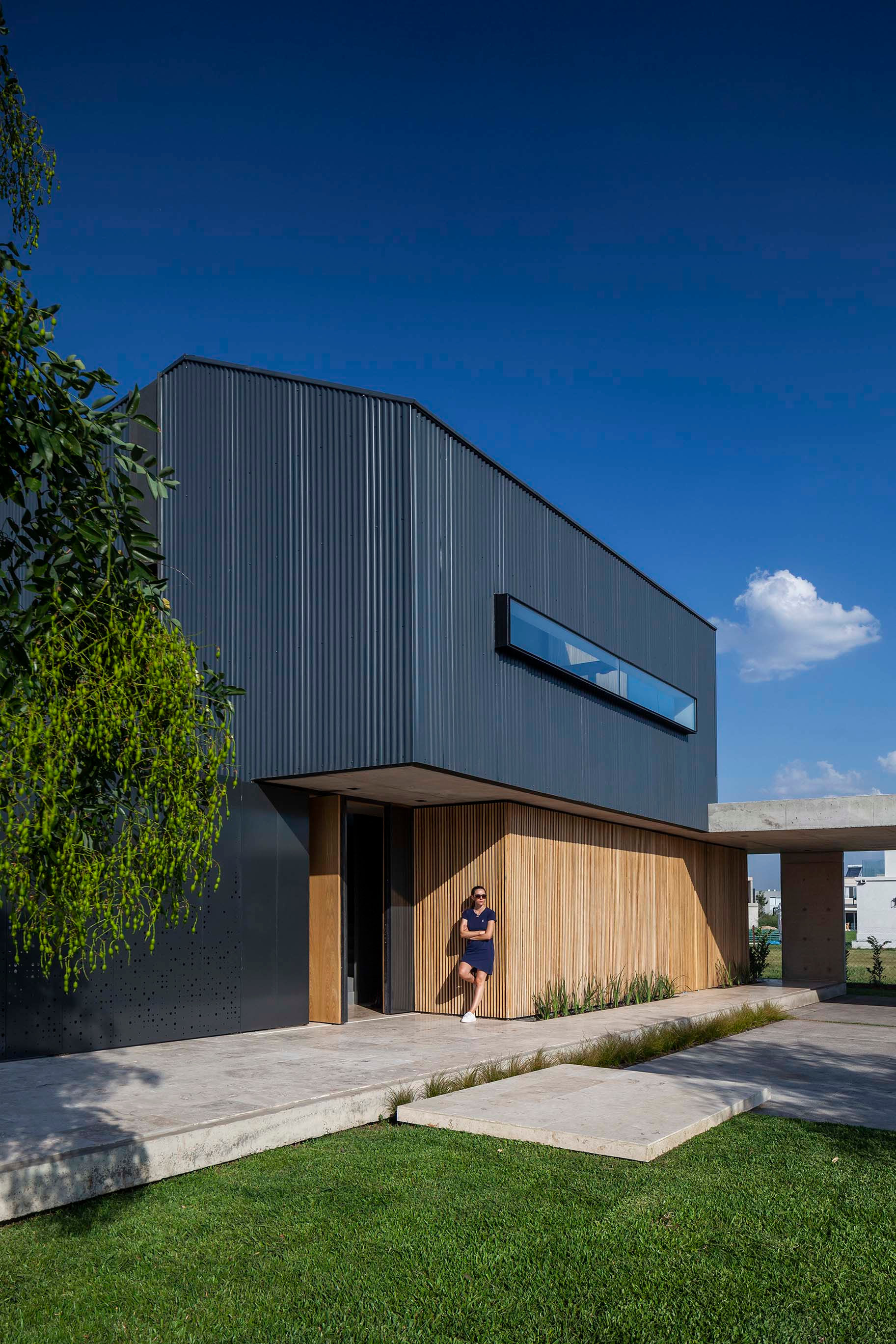
The exterior mixes metal and wooden cladding
QHouse 1: an Argentinian house of its time
The new house is modestly sized, offering up just enough defensive character to its suburban plot without seeming withdrawn and insular. Building using two different construction systems – concrete and steel frame – the architects were able to cut down on construction time and costs and make the most of each material. At 220 sq m, the house accommodates a family’s needs without unnecessary embellishment or scale.
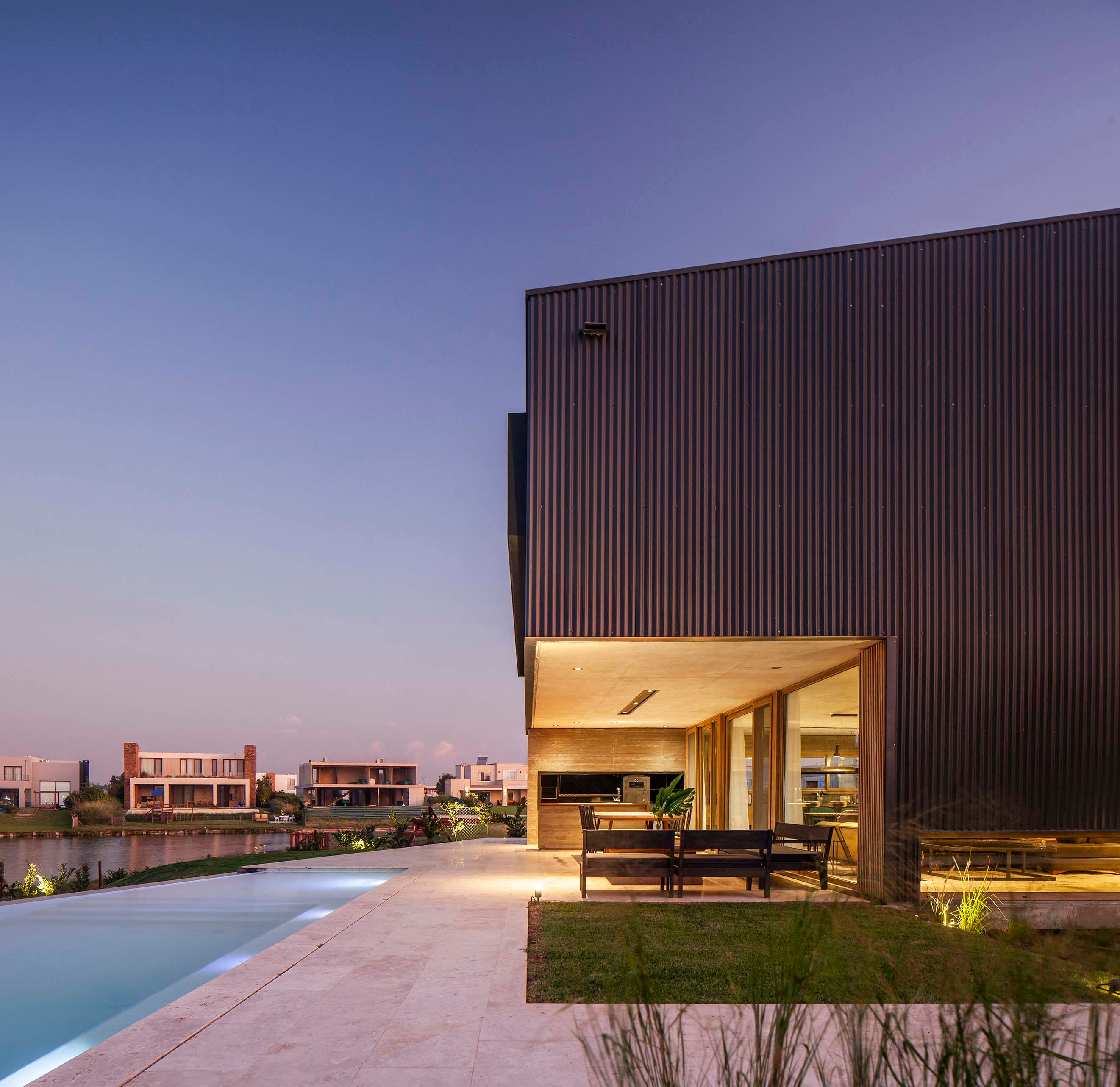
The upper floor oversails the outdoor entertaining space
The structure also allows for a flexible layout. This first home has an expansive open-plan ground floor, with a covered terrace containing a dining area and outdoor kitchen. This sheltered niche is carved out of the main volume of the house, its exposed concrete walls and ceilings juxtaposed with the vertical metal cladding that wraps around the principal volume. At ground-floor level, light-coloured cerejeira wood cladding is used to contrast with the metal cladding.
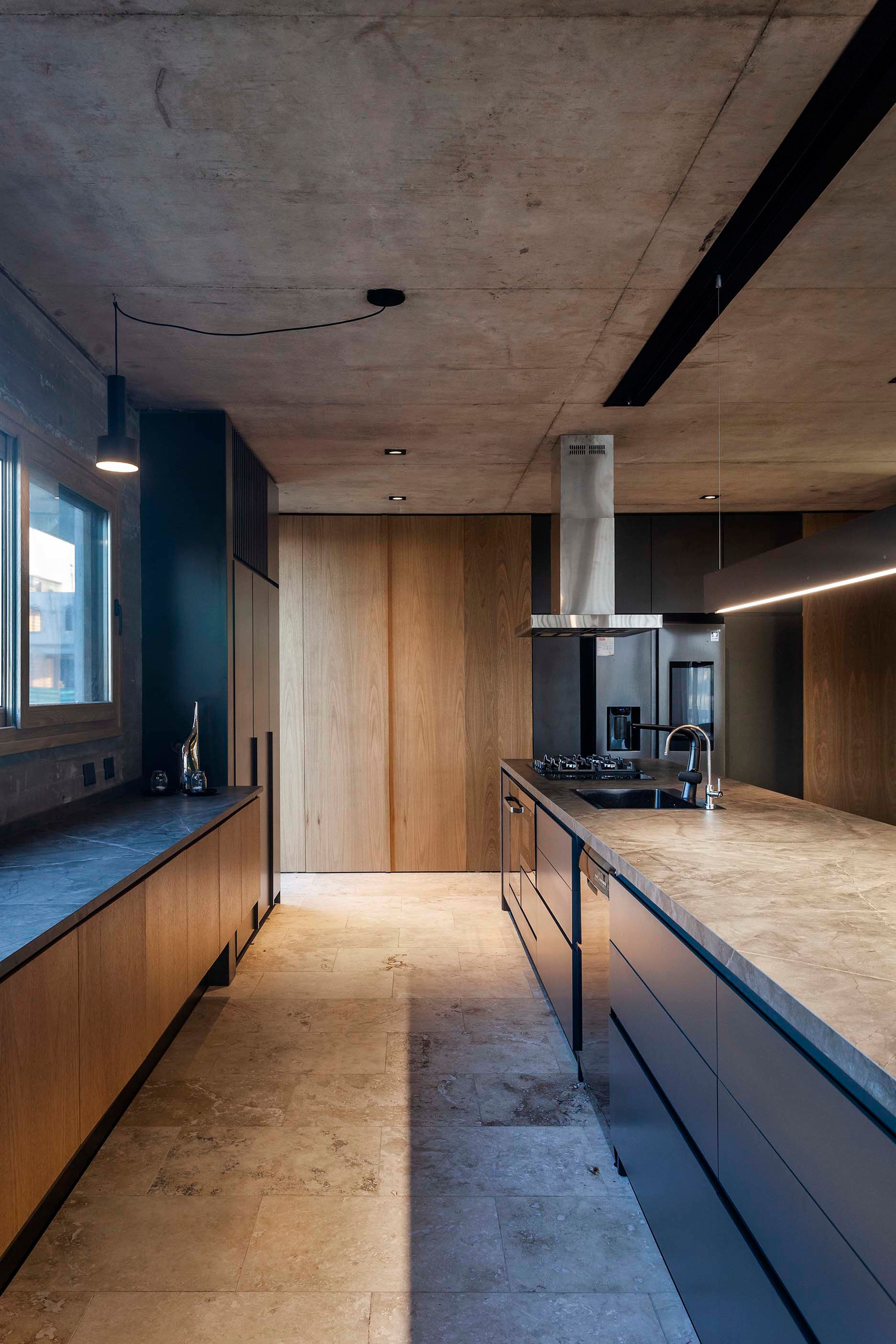
The kitchens features raw concrete and stone floors
Concrete was used throughout the ground floor and has been left exposed wherever possible. It is complemented by stone flooring and work surfaces. A long run of glazing opens up the ground floor to the patio area, emphasising the importance of the garden and pool area as a social space.
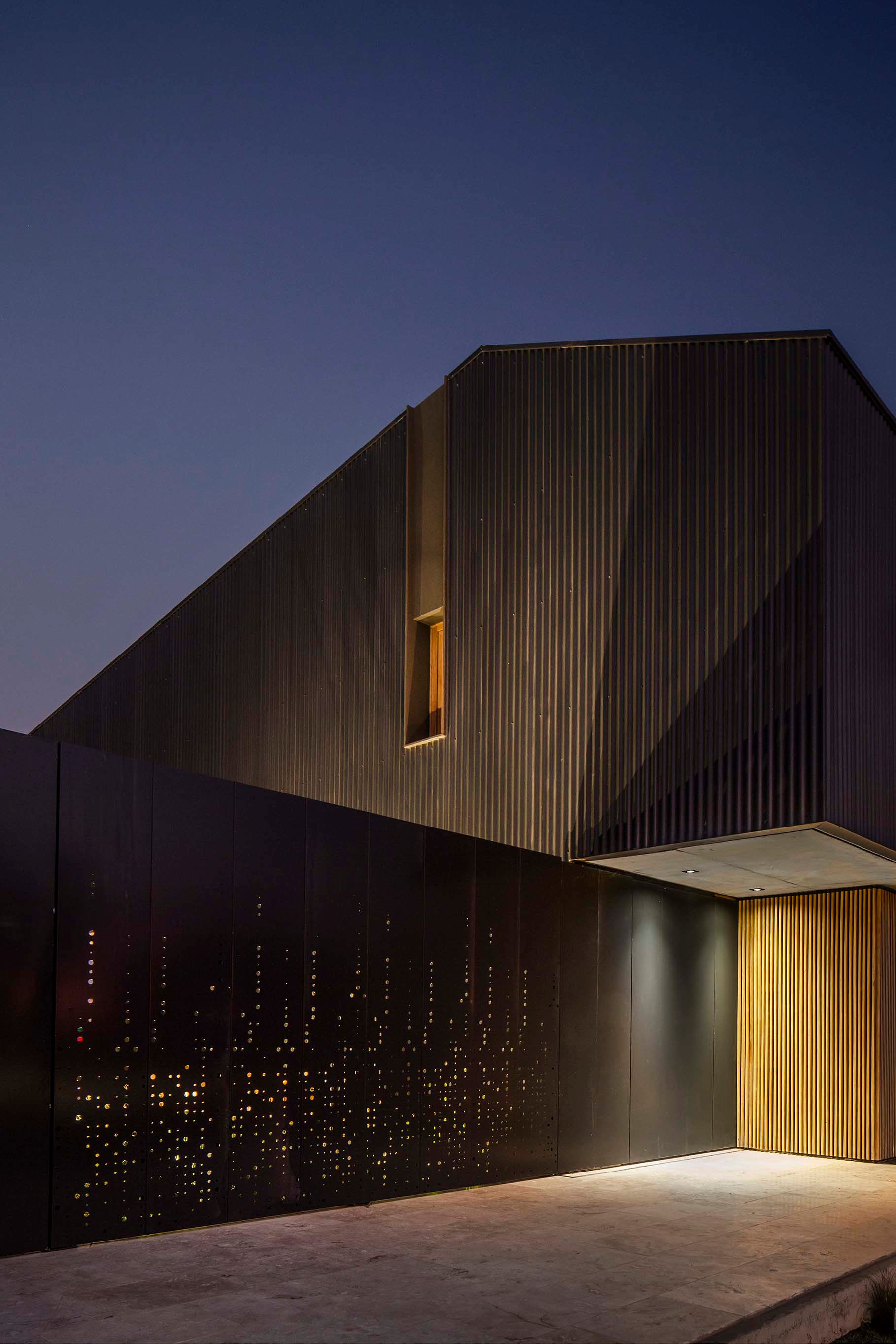
The upper part of the house is private and mysterious
Windows are scattered across the façade to create precisely framed views and preserve privacy. In particular, the upper floor receives a substantial amount of light from a rooflight and glazed internal courtyard, with a void reaching all the way down to the ground floor. The upstairs study looks across the void to this patio, which is planted to create an internal landscape, around which the life of the house can revolve.

A study overlooks an atrium and internal garden
Upstairs, reached from staircase in the downstairs library, there are two small bedroom suites and a large principal suite, with a view north-east across the development’s water feature.
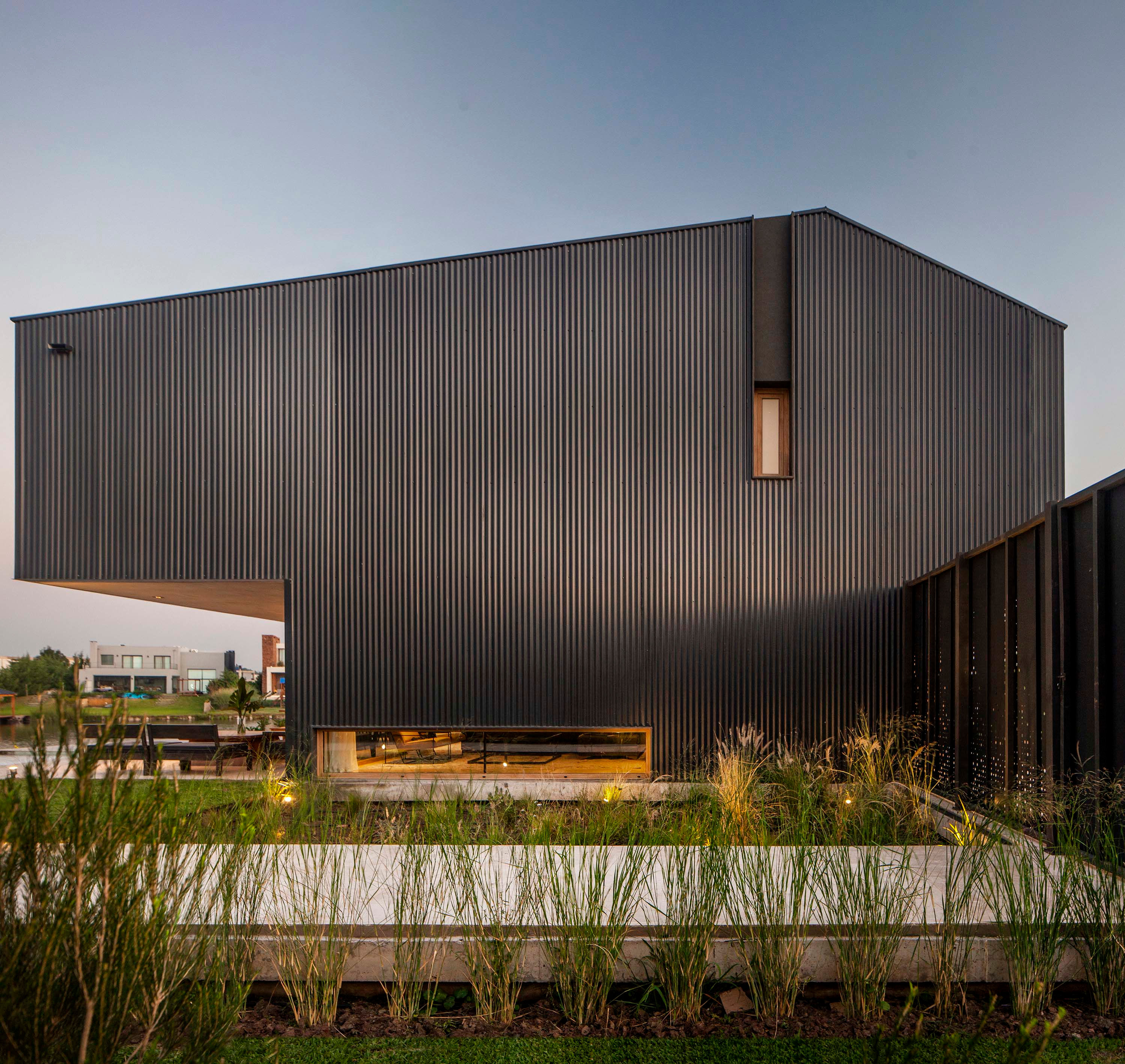
Simple volumes create a dramatic silhouette
While the QHouse 1 is hardly revolutionary, it is certainly different, eschewing both pseudo vernacular stylings and the bland SketchUp Modernism that has become lazy shorthand for contemporary living. Carefully detailed, with a clear divide between social and private spaces, it is an archetype designed to be open to all.
Receive our daily digest of inspiration, escapism and design stories from around the world direct to your inbox.
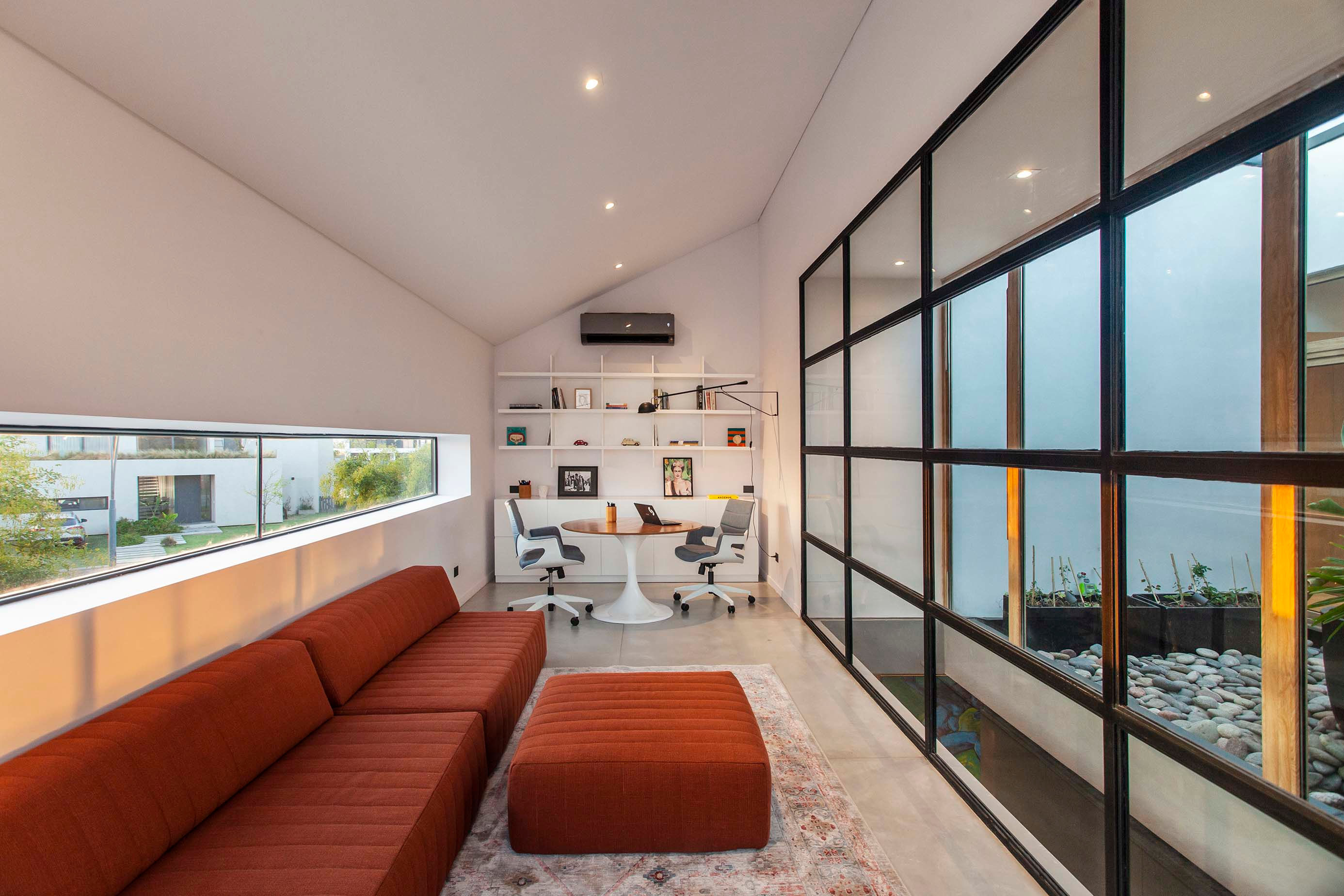
The study has slender windows and an interior wall of glass
Jonathan Bell has written for Wallpaper* magazine since 1999, covering everything from architecture and transport design to books, tech and graphic design. He is now the magazine’s Transport and Technology Editor. Jonathan has written and edited 15 books, including Concept Car Design, 21st Century House, and The New Modern House. He is also the host of Wallpaper’s first podcast.
-
 The Bombardier Global 8000 flies faster and higher to make the most of your time in the air
The Bombardier Global 8000 flies faster and higher to make the most of your time in the airA wellness machine with wings: Bombardier’s new Global 8000 isn’t quite a spa in the sky, but the Canadian manufacturer reckons its flagship business jet will give your health a boost
-
 A former fisherman’s cottage in Brittany is transformed by a new timber extension
A former fisherman’s cottage in Brittany is transformed by a new timber extensionParis-based architects A-platz have woven new elements into the stone fabric of this traditional Breton cottage
-
 New York's members-only boom shows no sign of stopping – and it's about to get even more niche
New York's members-only boom shows no sign of stopping – and it's about to get even more nicheFrom bathing clubs to listening bars, gatekeeping is back in a big way. Here's what's driving the wave of exclusivity
-
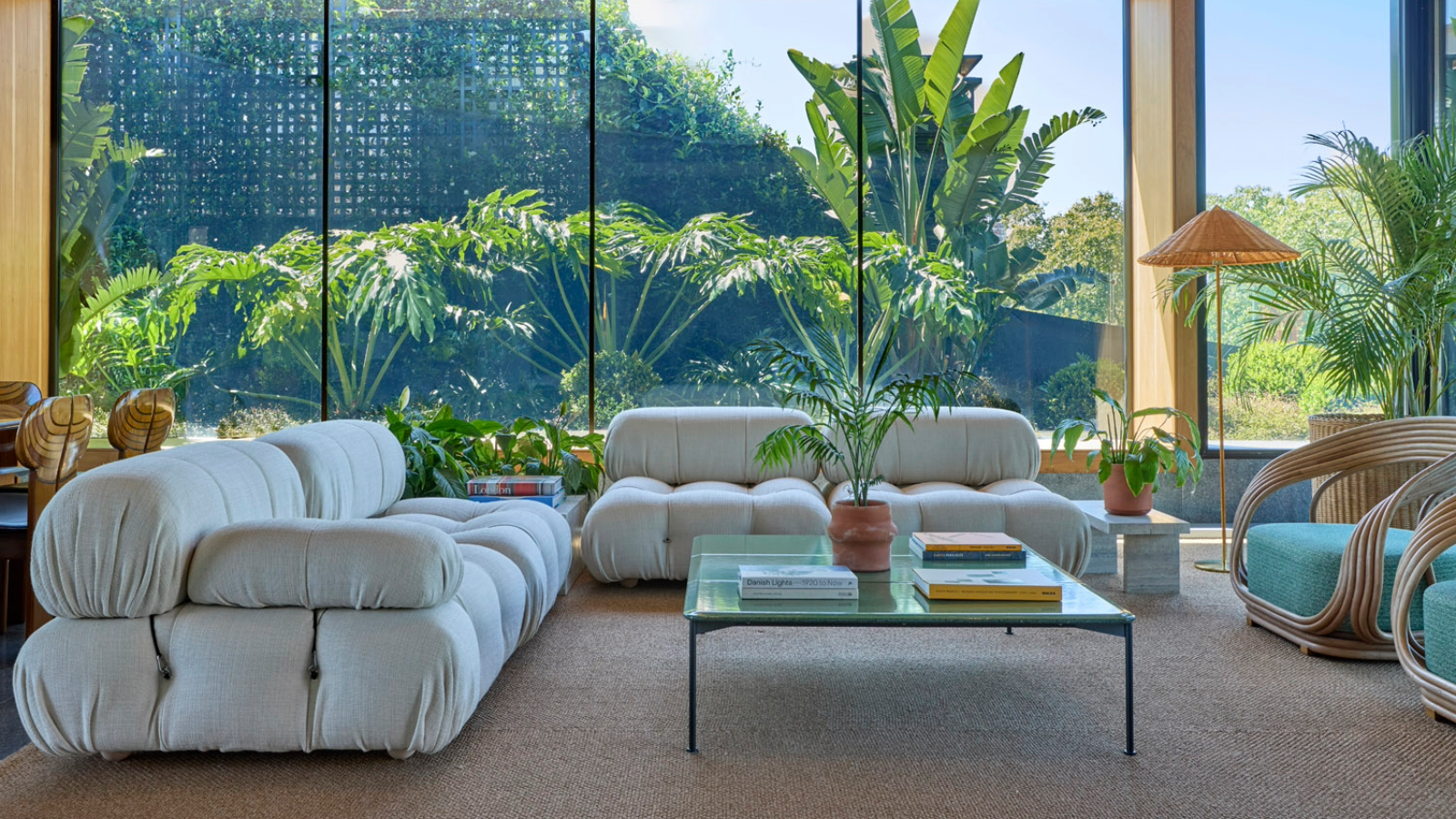 Art-filled Embassy House in Buenos Aires has all the right connections
Art-filled Embassy House in Buenos Aires has all the right connectionsKallos Turin transforms a former diplomatic residence in Buenos Aires into a private family home with a mission to reconcile past and present
-
 What can a converted car park in Buenos Aires teach us about urban green space?
What can a converted car park in Buenos Aires teach us about urban green space?Set on the site of a former car park, Ola Palermo is an adaptive reuse, urban greening project by ODA; we catch up with the New York-based studio’s founder Eran Chen to discuss his fantastically pragmatic approach
-
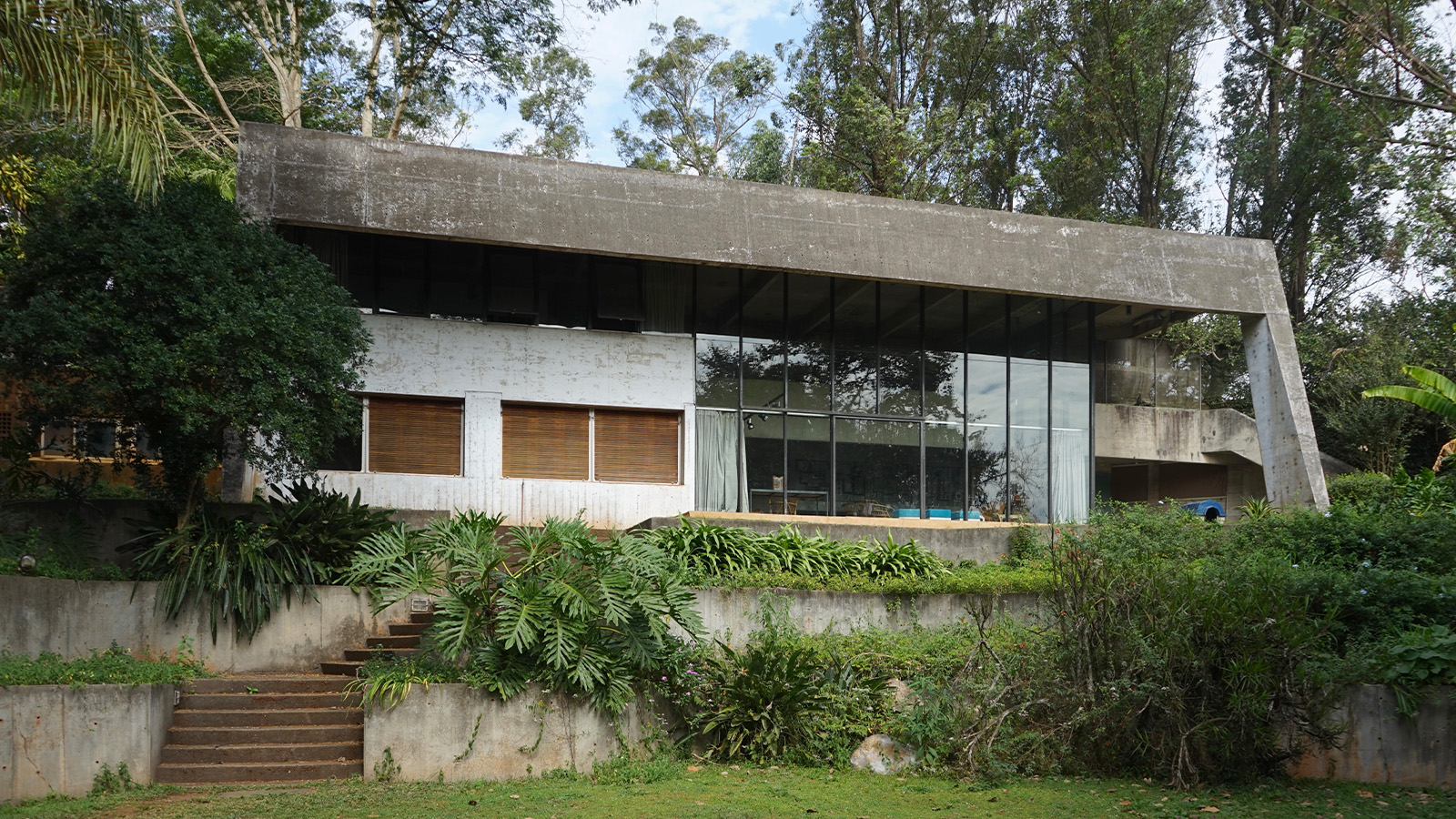 Tour 18 lesser-known modernist houses in South America
Tour 18 lesser-known modernist houses in South AmericaWe swing by 18 modernist houses in South America; architectural writer and curator Adam Štěch leads the way in discovering these lesser-known gems, discussing the early 20th-century movement's ideas and principles
-
 An Argentinian retreat in the forest allows nature and architecture to flow
An Argentinian retreat in the forest allows nature and architecture to flowA wooded Argentinian retreat, Forest House by Gonzalo Bardach Arquitectura, blends indoors and outdoors with architectural flair
-
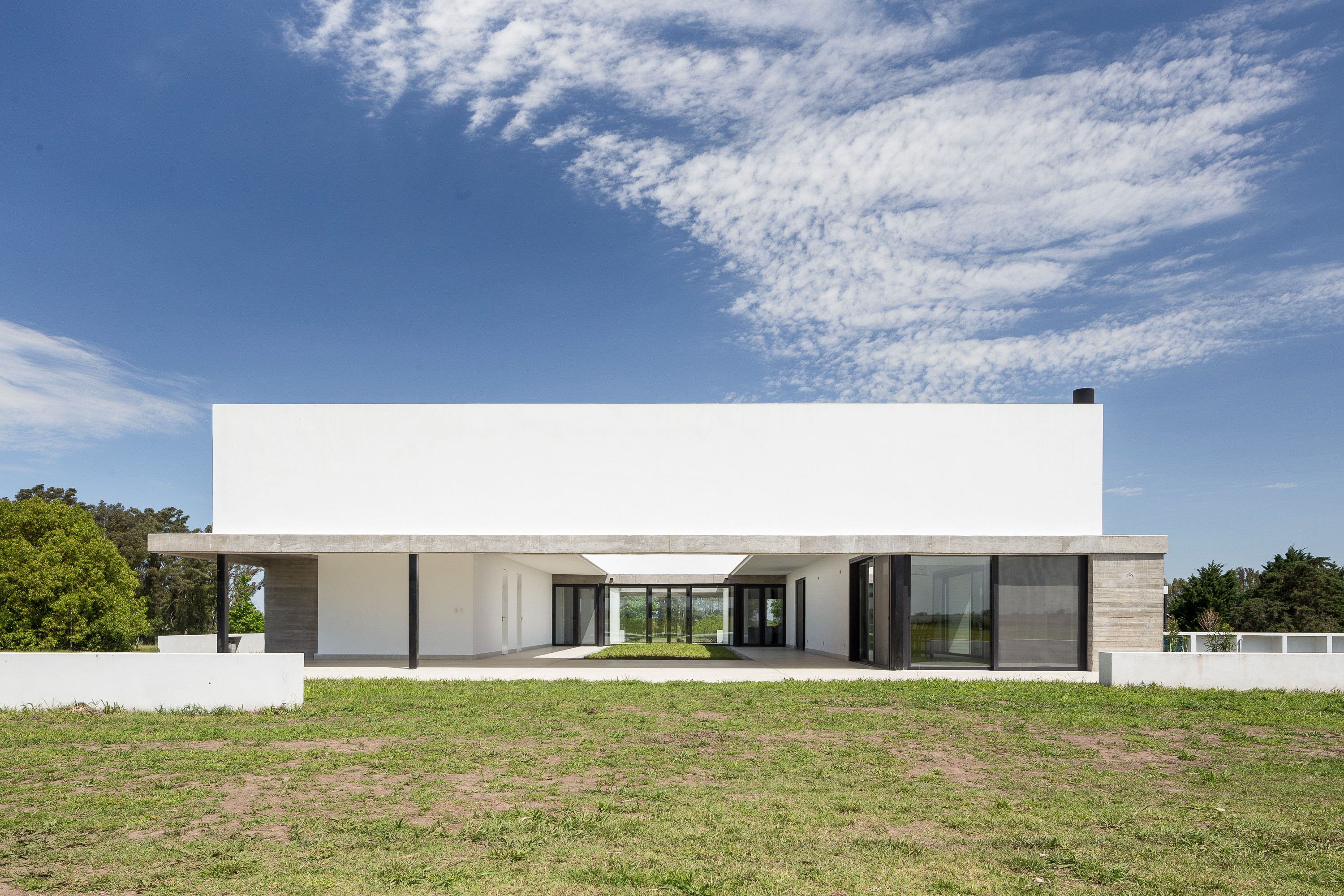 Traditional Argentinian farmhouse design inspires this modern home
Traditional Argentinian farmhouse design inspires this modern homeDesigned by emerging Buenos Aires architecture studio Tacadi, this house in Perdices is inspired by the long tradition of Argentinian farm structures
-
 A Patagonian sheep farm gets a sophisticated remastering
A Patagonian sheep farm gets a sophisticated remasteringBringing a balance of Swiss practicality and South American cultural knowledge, Lausanne- and Buenos Aires-based architects Richter Dahl Rocha & Associés has renovated a Patagonian sheep farm and created a unique casa at its heart – as featured in the
-
 Estudio Galera builds concrete garden pavilion for a growing family
Estudio Galera builds concrete garden pavilion for a growing family -
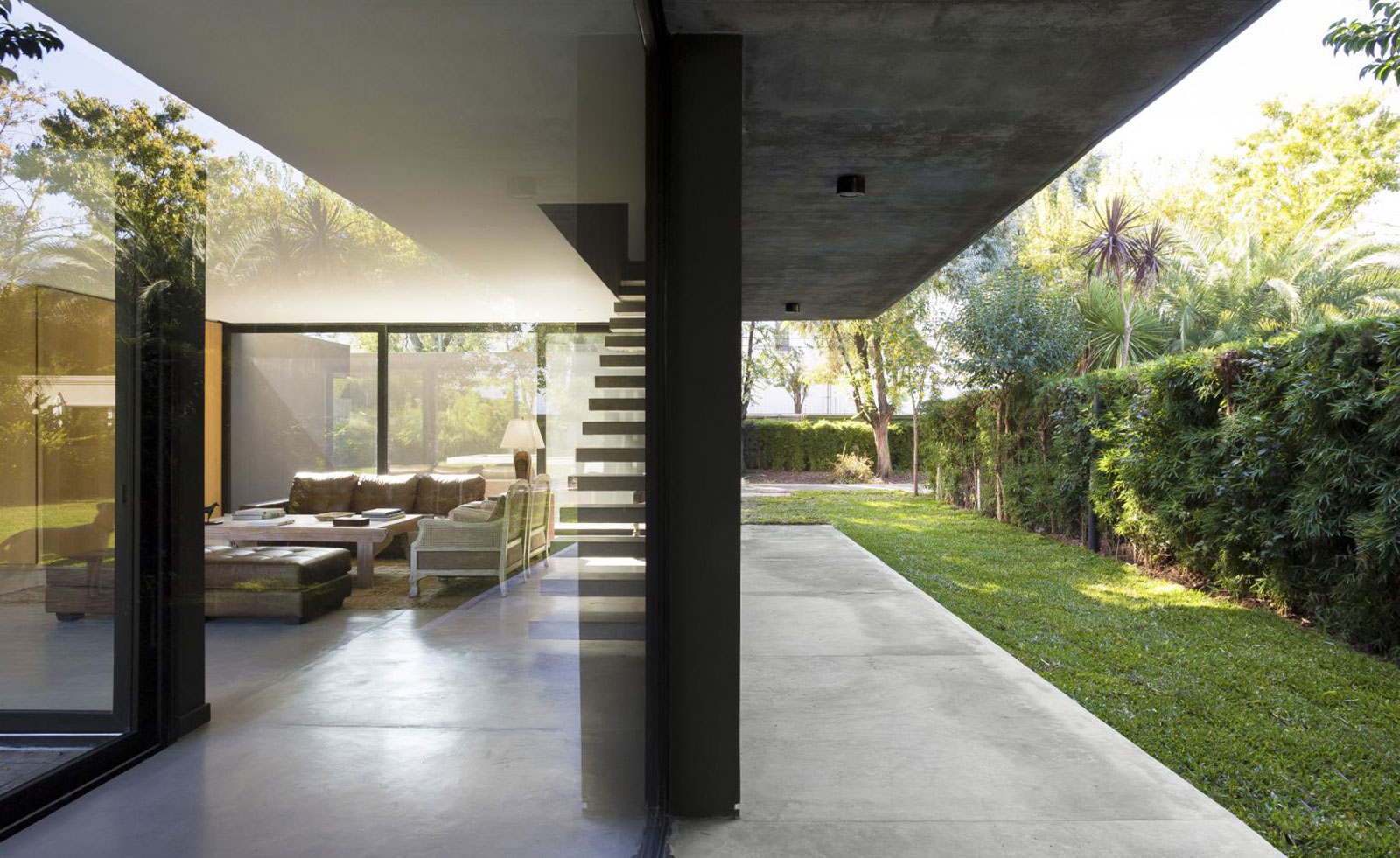 Colle-Croce celebrates horizontality with a concrete house in Argentina
Colle-Croce celebrates horizontality with a concrete house in Argentina